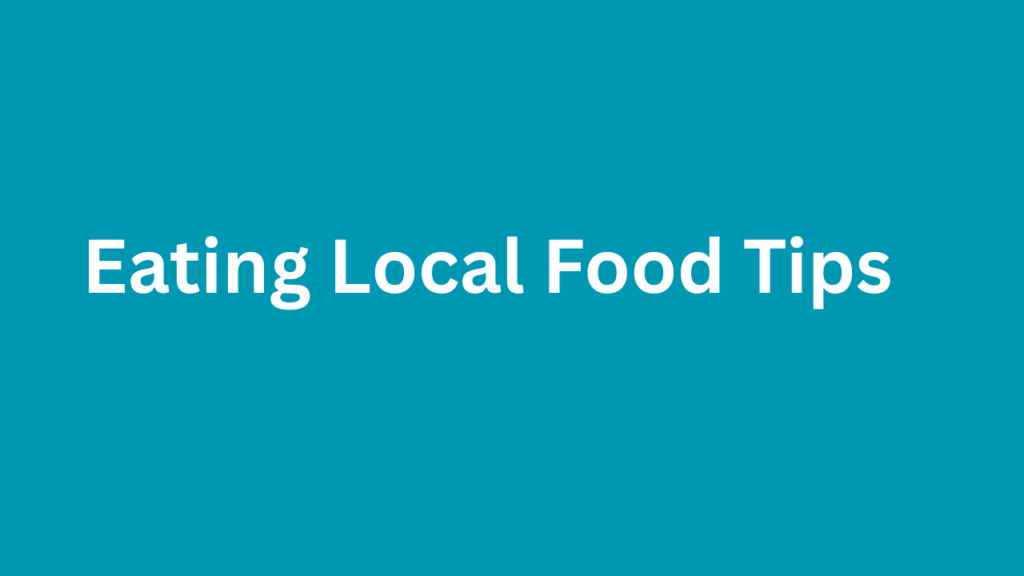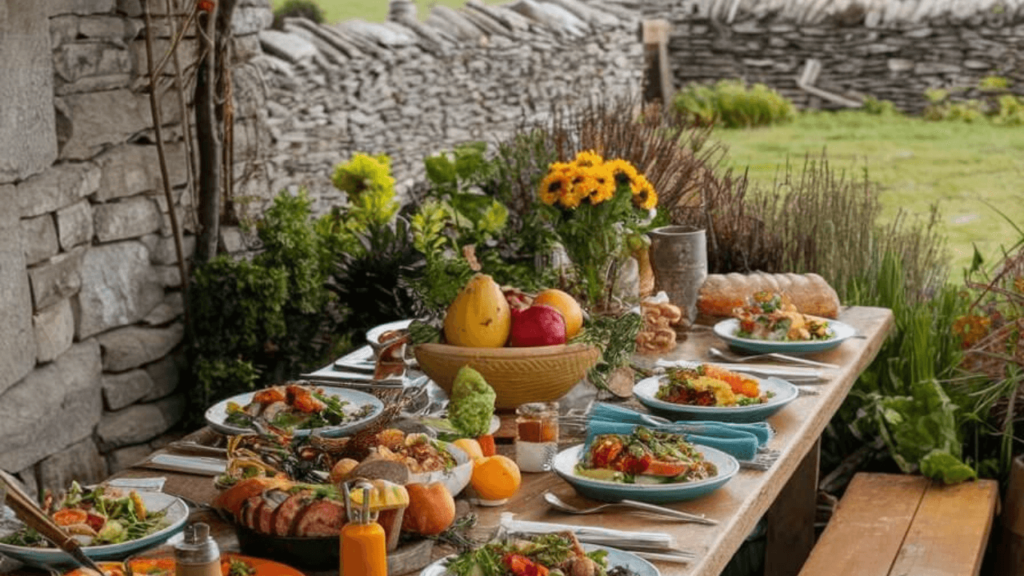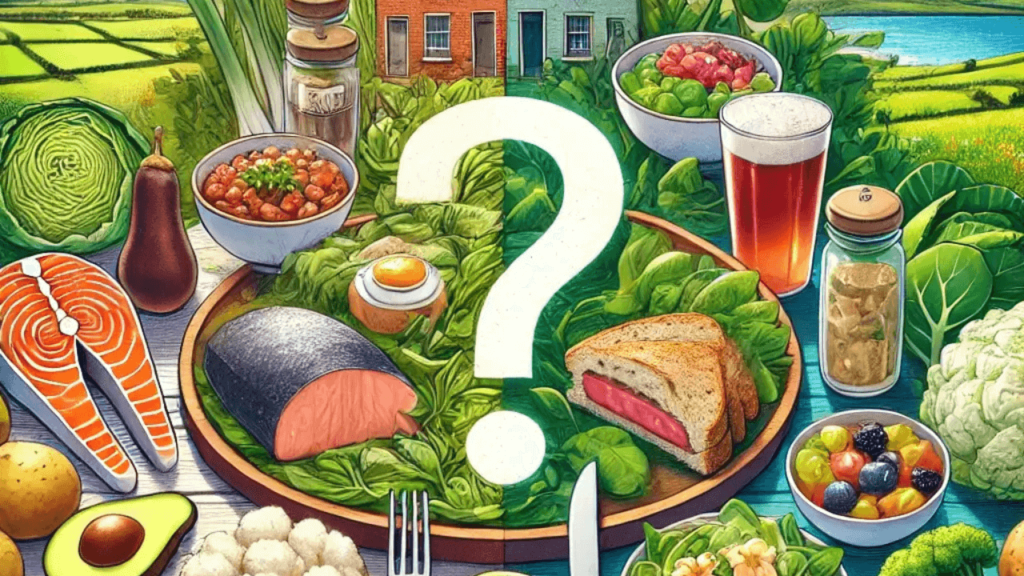When you travel, food isn’t just about filling your stomach — it’s about immersing yourself in a culture. Sharing a bowl of pho at a street corner in Hanoi, tasting freshly baked baguettes in a Parisian café, or trying spicy tacos from a bustling market stall in Mexico City connects you directly to the heart of a place. Eating local food is one of the most authentic, memorable, and rewarding aspects of travel.
But with these rewards come questions: How do I know if the food is safe? How can I avoid tourist traps and find the real local gems? What if I have allergies? How do I make sure I’m supporting the community and not harming it?
This article explores practical, research-backed, and personally informed tips for eating local food while traveling. You’ll learn how to discover authentic experiences, protect your health, respect local traditions, and contribute positively to communities — all while savoring every bite.
Why Eating Local Matters Today
The rise of food tourism shows just how much travelers value authentic culinary experiences. Surveys consistently reveal that a majority of travelers now plan trips with food in mind, making meals and markets central to their itineraries.
Eating local benefits you and the community:
- Cultural immersion: Local dishes often tell stories of history, migration, and survival. For example, Ireland’s soda bread evolved from simple ingredients during tough times, while India’s spices carry centuries of trade and cultural exchange.
- Healthier, fresher food: Local food is often more seasonal and less processed than international fast-food chains.
- Economic impact: Spending money at family-owned restaurants and markets keeps your travel dollars in the community, supporting small businesses and local farmers.
- Sustainability: Shorter supply chains and seasonal foods often reduce environmental impact compared to imported goods.
Personally, some of my most cherished travel memories are tied to food: a humble bowl of noodles in Bangkok cooked in front of me at a street stall, freshly grilled sardines eaten by the beach in Portugal, or a homemade stew offered by a family in rural Morocco. These weren’t just meals — they were lessons in culture, hospitality, and humanity.
How to Find Authentic Local Food (and Avoid Tourist Traps)
1. Do Your Homework
Before traveling, research neighborhoods, markets, and local specialties. Guidebooks are helpful, but blogs, local food forums, and even social media often point to hidden gems that aren’t touristy.
2. Take a Food Tour
Food tours led by locals are one of the easiest ways to discover authentic food safely. They introduce you to trusted vendors, explain cultural context, and often take you to places you’d never find on your own.
3. Follow the Locals
A crowd of locals at a stall or restaurant is usually a good sign. It often means the food is fresh, affordable, and trusted by the community. That said, don’t rely on popularity alone — observe hygiene as well.
4. Avoid Overly Flashy “Tourist Menus”
Restaurants with giant boards advertising “authentic local food” in five different languages are often aimed at tourists. They may lack authenticity or charge inflated prices. Instead, look for smaller places with simple menus.
Staying Safe While Eating Local
One of the biggest concerns travelers have is getting sick. Traveler’s diarrhea affects millions every year, and food is one of the leading causes. But you don’t have to avoid street food or local markets altogether. A few precautions make a huge difference.
1. Stick to “Cooked and Hot”
Foods cooked in front of you and served steaming hot are much safer than pre-prepared meals left sitting at room temperature. Heat kills most harmful microbes.
2. Be Cautious with Water and Ice
In destinations where water quality is questionable, stick to bottled or boiled water. Avoid ice in drinks unless you know it’s made from purified water. Hot tea and coffee are usually safe.
3. Observe Vendor Hygiene
When deciding where to eat:
- Check if the vendor uses clean utensils.
- See if raw and cooked foods are kept separate.
- Notice whether the stall looks reasonably clean and organized.
If it looks unsanitary, move on — no matter how tempting the smell.
4. Peel It Yourself
If you want fruit, choose options you can peel yourself (bananas, oranges, mangos). Pre-cut fruit left out in the open can be risky.
5. Carry a Travel Health Kit
Pack oral rehydration salts, anti-diarrheal medicine, and basic first-aid items. If you’re traveling to high-risk regions, consult your doctor about additional precautions or prescriptions.
Respecting Food Culture and Etiquette
Food isn’t just nourishment — it’s identity. Showing respect when eating abroad deepens your experience and builds trust.
1. Learn Basic Customs
In some cultures, it’s polite to eat with your right hand, while in others, sharing food is an expected act of community. Learning small etiquette rules helps avoid awkward situations.
2. Say Thank You in the Local Language
Even a simple “thank you” or “delicious” in the local tongue shows appreciation and effort.
3. Be Mindful with Photos
It’s tempting to photograph every meal, but always ask before snapping pictures of vendors or their families. Respect comes before Instagram.
4. Pay Fair Prices
Support small businesses fairly. Avoid bargaining down prices for food — in many places, a few extra cents can make a big difference for a family-run stall.
Eating Local with Dietary Restrictions or Allergies
Traveling with allergies, intolerances, or dietary restrictions can feel intimidating, but it doesn’t mean you have to miss out on local flavors.
1. Learn the Vocabulary
Before traveling, memorize or print phrases that explain your restrictions, like “I am allergic to peanuts” or “I don’t eat pork.”
2. Carry Allergy Cards
A printed card in the local language explaining your dietary needs can prevent miscommunication.
3. Choose Restaurants Wisely
If your allergy is severe, stick to restaurants that clearly list ingredients or are recommended for accommodating special diets. For milder restrictions, smaller eateries and markets are often flexible if you explain clearly.
4. Bring Emergency Supplies
Carry your medication or an epinephrine injector if needed. It’s better to be safe than sorry.
Eating Local Responsibly and Sustainably
Travel should be a force for good. Eating local food can support communities, but it can also contribute to exploitation or harm if done carelessly.
1. Choose Small, Local Businesses
Prioritize family-owned restaurants, street vendors, and community-run projects over big chains. Your money will have a more direct positive impact.
2. Eat Seasonally
Opt for dishes that use seasonal produce. Not only are they fresher and tastier, but they’re also more sustainable.
3. Avoid Endangered or Exploitative Foods
In some places, exotic dishes may involve endangered species or unethical practices. Do a little research to avoid supporting harmful trades.
4. Minimize Waste
Bring a reusable bottle, say no to unnecessary plastics, and take leftovers when possible.
Practical Tips for Street Food Beginners
If you’re new to eating street food, here are some simple rules:
- Go where it’s busy — high turnover means fresher food.
- Watch the cooking — if you see your food cooked to order, it’s generally safer.
- Start simple — try cooked items before raw or adventurous dishes.
- Use hand sanitizer before meals.
- Ease in — your stomach may need time to adjust to different spices and ingredients.
Common Questions Travelers Ask
Q: Is street food always unsafe?
No. Street food can be as safe as restaurant food if vendors follow good hygiene. In many cultures, street food is the backbone of daily dining.
Q: Can I eat salads or raw vegetables?
Exercise caution, especially in regions with uncertain water quality. If you want something fresh, choose fruits and vegetables you can peel yourself.
Q: Should I bring antibiotics?
Not unless prescribed by a doctor. Most stomach issues resolve on their own with hydration and rest.
Q: How can I balance safety and authenticity?
Start with food tours, local markets, and popular restaurants. As you gain confidence, you can explore more adventurous foods.
A Personal Example
When I visited Marrakesh, I was both excited and nervous about the famous Jemaa el-Fnaa night market. The square was alive with vendors grilling meats, squeezing fresh orange juice, and serving steaming bowls of soup. I followed three rules: stick to busy stalls, choose food cooked in front of me, and drink only sealed bottled water.
The result? A safe and unforgettable experience. The smoky flavors of grilled lamb, the warmth of spiced soup, and the lively atmosphere of the market are memories that still stay with me. Taking precautions didn’t limit the experience — it enhanced it.
Final Checklist Before Eating Local
- Research local food specialties before your trip.
- Choose busy stalls and restaurants with visible cooking.
- Stick to cooked, hot meals when in doubt.
- Avoid unsafe water and ice.
- Carry a small health kit.
- Learn a few local food phrases.
- Support small, locally-owned businesses.
- Respect food customs and etiquette.
Conclusion — Savor the World, Safely and Respectfully
Eating local food is more than a necessity — it’s an adventure, a story, and a connection to people. With the right mix of curiosity, respect, and caution, you can explore flavors around the world while staying safe and supporting communities.
So, the next time you travel, don’t just see the sights — taste the culture. Ask questions, try something new, and embrace the unknown with an open mind (and a prepared stomach).
I’d love to hear about your own experiences with eating local food while traveling. What was the most memorable dish you’ve ever tried abroad?

Hi, I’m Tanvir, the founder and author of Explore Ireland Now. With a deep love for Ireland and its rich culture, history, and landscapes, I created this site to share everything that makes this beautiful country worth exploring. Whether you’re a local looking for hidden gems or a traveler planning your next adventure, I provide insightful guides, tips, and recommendations to help you experience Ireland to the fullest.
From stunning landscapes to vibrant cities and quaint villages, Ireland is full of wonders waiting to be discovered. Through my personal experiences and research, I aim to bring you the most up-to-date information and inspiration for your journey.
Thank you for visiting Explore Ireland Now—I hope my content helps you uncover all that this incredible country has to offer! If you have any questions or need travel advice, feel free to reach out.



